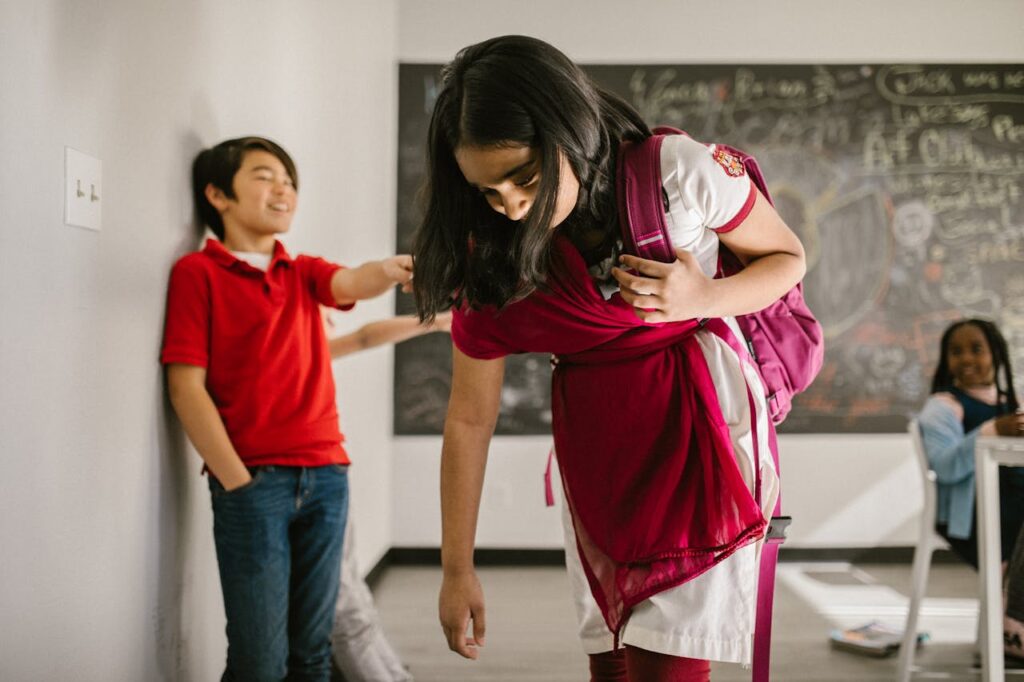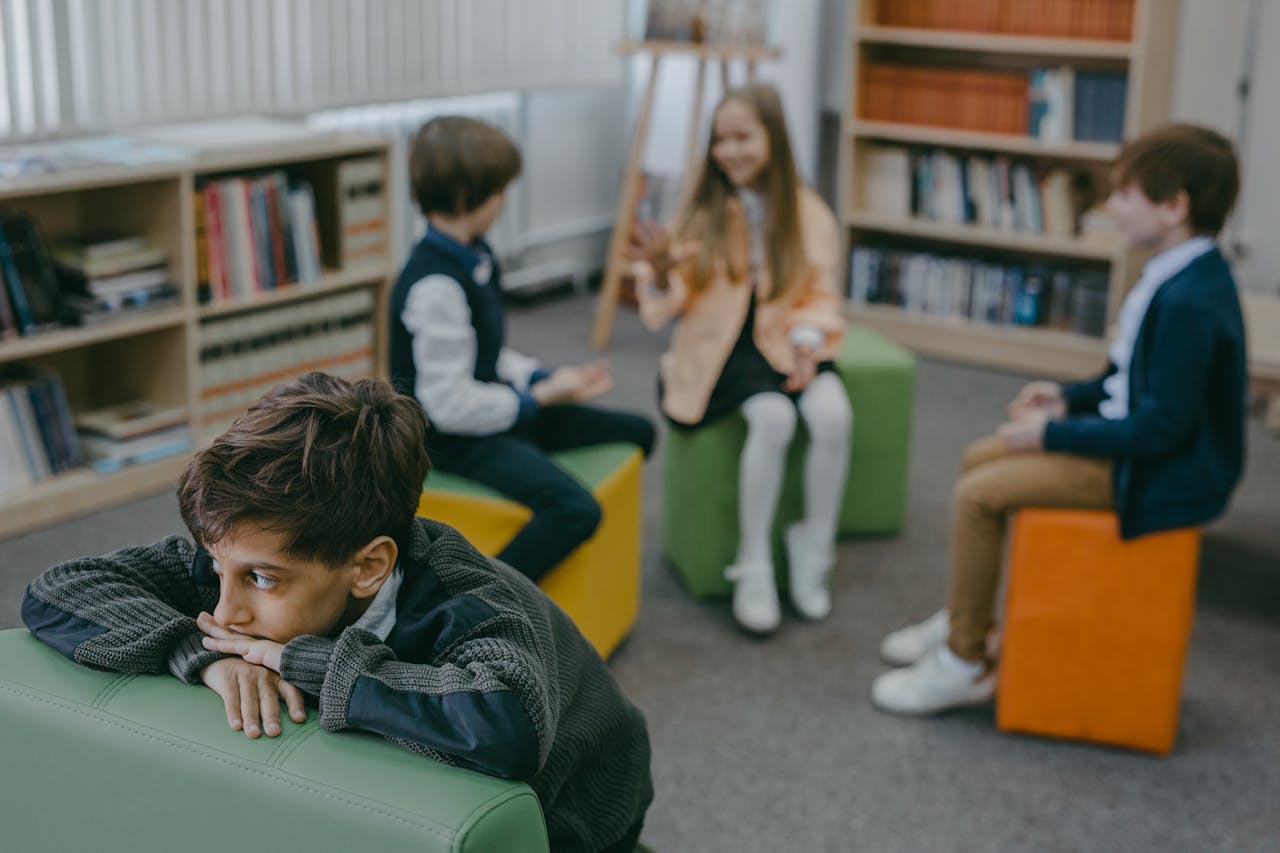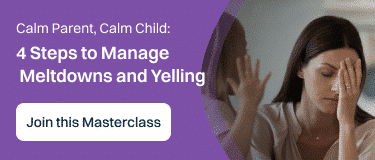Discover the different types of bullying, understand why bullying is bad, what short and long-term effects it has, and how you can intervene to stop it.
Bullying has been occurring for generations. However, our perception of it has changed as our understanding of psychology has grown. Many parents used to see bullying as a right of passage or just part of growing up. Today though, more people are more aware of the negative effects it can have and take it more seriously.
Depending on the year, source, parameters, and types of bullying surveyed, somewhere between 19% and 46% of students report being bullied in some way. That’s a huge portion of kids being adversely affected. If we want to protect our children from this pervasive issue, we must first understand the different types of bullying. Only then can we put measures in place to address and prevent the issue effectively.
What Is Bullying?
According to StopBullying.Gov, bullying is defined as:
“Bullying is unwanted, aggressive behavior among school aged children that involves a real or perceived power imbalance. The behavior is repeated, or has the potential to be repeated, over time. Both kids who are bullied and who bully others may have serious, lasting problems.”
The criteria they use to decide when an action is or isn’t considered bullying are threefold.
Bullying must:
- Be aggressive;
- Involve a power imbalance — real or perceived — like physical strength, level of popularity, or the leveraging of secrets or rumors;
- Occur more than once or have the potential to.
The behavior doesn’t need to include physical contact to be considered bullying.
Different Types of Bullying
While physical violence is often what people think of when they hear bullying, physical bullying is only one type. So, what are the different types of bullying? There are four main categories that bullying incidents can fall into.
The four types of bullying are:
- Physical bullying
- Verbal bullying
- Cyberbullying
- Social bullying
Bullying seems to become less prevalent as kids age. Middle school kids (grades 6-8) are bullied at a rate of around 27%-28% while only 16% to 22% of high school kids (grades 9-12) are bullied. Parents and school administrators must understand bullying and types of bullying if they hope to put measures in place to deal with it properly. So, let’s go into each type a little deeper.

Credits: Pexels
1. Physical Bullying
Physical bullying is aggressive behavior involving an imbalance of power that typically includes unwanted physical contact (including but not limited to physical injuries) or property damage. Common examples include pushing, tripping, punching, spitting, breaking glasses, damaging phones, and so on.
There are different forms of bullying for each type as well. This can include bullying based on demographic factors. Physical bullying can include prejudicial bullying based on race or ethnicity. Biracial and multiracial students are bullied at the highest rate (37%) compared to white (24.6%), black (22.2%), hispanic (18), and asian students (13.5%).
Physical bullying doesn’t have to be based on prejudice though. It can be based on size, academic performance, or interests, among others. Kids will often ostracize each other over any perceived difference.
2. Verbal Bullying
Verbal bullying is an aggressive behavior involving a power imbalance committed using spoken or written words. This can include name-calling, insults, taunting, harassment, sexual or discriminatory comments, or threats in person or via written medium. While verbal bullying is often treated as less severe because it doesn’t include physical violence, it can have devastating, long-lasting effects. These can include a higher risk of depression, anxiety, self-harm, and substance abuse.
3. Cyberbullying
Cyberbullying is aggressive behavior involving an imbalance of power that takes place digitally over devices like smartphones, computers, and tablets. This can include text messages, direct messages, emails, or via social media. Cyberbullying is relatively new. While bullying in general has existed pretty much forever, cyberbullying has only existed since the dawn of the internet.
Once home internet became standard, everyone had a portal to the outside world inside their homes. This has many benefits like being able to socialize with people from across the world and having access to more information than ever before. However, it also means that bullying doesn’t always stop once kids are in the safety of their own homes.
Bullies now have a way to get to their victims from anywhere at any time. As the internet becomes more prevalent and more of kids’ lives take place online, online bullying worsens. Most kids (70%) now play video games, often online with others.
Some online gaming spaces can be extremely toxic. It isn’t uncommon for players to bully others by cursing, insulting, or screaming. This can often include using racial slurs, ableist insults, and sexual bullying like making sexist comments or outright sexual harassment. It can even escalate to threats of violence, doxing, or swatting.
Doxing is when someone reveals a person’s private information online, often including their name and/or location. Swatting is when someone calls the police with a false report of a crime that requires a police response or SWAT team to someone’s address. This is dangerous and has led to the death of the victim in some cases.
4. Social Bullying
Social bullying, also known as relational bullying, is aggressive behavior involving a power imbalance (in this case usually popularity/ social status) that involves harming someone’s reputation, relationships with others, or social standing. This can include exclusion, shunning, turning others against the target, embarrassing them, or spreading rumors to damage their reputation. The victims of bullying of this type are more likely to be girls.
👉 Struggling with your child’s anger? Learn about the top causes, including bullying behavior, and discover effective solutions in “Top Causes for Child’s Anger and Effective Solutions for Parents.”
Effects of Bullying
While many still hold the belief that bullying is just a part of life and isn’t a big deal, the data and experts would disagree. So, why is bullying bad? Bullying can have some serious negative psychological effects. This is the case, not only for the victim, but also for the bully, and even bystanders. Proximity to bullying in any way can negatively impact mental health.
Children who experience bullying can have mental health issues like depression, low self-esteem, anxiety, poor eating and sleeping habits, physical health problems, and decreased academic achievement. They skip school more and may drop out. Even worse, many school shooters were motivated by getting back at bullies.
Bullies are more likely to abuse drugs and alcohol, get into fights, damage property, drop out of school, commit crimes, and engage in domestic abuse. Even witnesses are more likely to have mental health problems, abuse drugs and alcohol, and skip or miss school more.
The effects for all groups may last well into adulthood. While bullying doesn’t cause suicide, it can be one of many contributing factors. The risk of suicide is higher in racial, ethnic, and sexual minority populations.
Mental Health Consequences
Mental health can be adversely affected by bullying. Psychological harm can be both short and long-term for victims, bullies, and bystanders.
In the short term, these effects can include:
- Anxiety or depression
- Self-harm or increased risk of suicidal ideation
- Psychosomatic symptoms, when symptoms like headaches and stomachaches present with no physical cause
- Substance abuse
- Poor eating habits
- Self-esteem issues and shame
- Sleep issues like insomnia and nightmares
- Social problems like peer shunning
According to recent studies, there are also long-term effects for both the victim and the bully, which worsen the longer the behavior continues.
These long-term effects for victims may include:
- Stress-induced illnesses
- Family dynamic issues due to the stress and mental health decline of the child and the guilt of the parents
- Chronic anxiety and depression
- Heightened risk of self-harm and suicide
- Poor health habits
- Substance abuse
- Eating disorders
- Panic attacks and PTSD
The long-term problems bullies face include:
- Domestic abuse
- Antisocial behavior
- Substance abuse
- Trouble maintaining gainful employment
Social and Academic Impact
Bullying can have short- and long-term social and academic effects on the targets of bullying and bullies themselves. Middle school kids experience the most bullying. If the situation is extended over a long period of time, the effects can become more and more dramatic.
These can include:
- School performance issues like trouble focusing to study and missing school
- Decline in GPA
- Dropping out of school
- Being excluded by their peer group
- Withdrawing from people close to them
- Difficulty maintaining friendships and other social relationships long-term
- Anti-social behavior (for bullies)
- Domestic abuse (for bullies)

Credits: Pexels
Recognizing Bullying: Signs and Symptoms
In order to recognize bullying, parents and school administrators must know how to identify the signs and symptoms of bullying. It’s also important to understand the different forms of bullying. Remember, all bullying starts with aggressive behavior and a real or perceived power imbalance. Those will be your first clues.
The signs a child is being bullied and the signs a child is bullying others will differ, so let’s go over each separately.
Signs Your Child May Be Bullied
Children being bullied generally display some common behaviors. Not all of these must be present to suspect bullying. Any number of them may appear depending on the child and the circumstances.
Signs your child is being bullied:
- Coming home with injuries frequently that they may be unable to explain.
- Having damaged clothes or property.
- Medical issues like headaches or fake illnesses to get out of school.
- Their eating and sleeping habits may change including eating disorders and nightmares.
- A decline in their social and academic performance.
- Feelings of helplessness, low self-esteem, or destructive behavior like running away from home, self-harm, or thoughts of suicide.
Signs Your Child Is a Bully
The signs your child is bullying others are starkly different. It may be hard to grapple with the idea that your child is a bully. However, it is important that you intervene as soon as possible to avoid harmful long-term effects on your own child and their victims.
Signs your child is a bully:
- Verbal or physical fights with other kids.
- Associating with kids that bully others.
- Exhibiting increasingly aggressive behavior and disciplinary action like being sent to the principal’s office.
- Coming home from school with money or new items they may have taken from others.
- Blaming others for their behaviors and issues to avoid taking responsibility for their actions.
- Becoming competitive or preoccupied with their reputation or social status.
Bullying Prevention Strategies
Bullying can be a really harmful experience that can affect kids for the rest of their lives. However, you don’t have to just sit around and wait for the signs that there’s already a problem to present themselves. You can intervene earlier. There are bullying prevention steps that both parents and school administrators can take to stop it before it even starts.
School-Based Programs
Schools can implement bullying prevention programs and initiatives. Anti-bullying measures can include things like educating staff on how to recognize bullying and what to do when they see a student being bullied.
You can also educate the students on bullying. You can discuss peer relations, teach them about the types of bullying and what bullying looks like, how to prevent it, what they should do if they see bullying, and how to report it. You can also do role-playing scenarios or creative writing assignments to explore and practice how they should react if they see this behavior.
Parental Involvement
Parents can help too! There’s only so much that can be done during school hours. You can talk to your children about why it isn’t okay to bully others, what to do if they get bullied or witness it, and talk to them about coming to you if something happens.
Have an ongoing open dialog on the subject. Ask them questions about their day. Ask if they have problems with any students or if there’s anyone they don’t like and why. Know who their friends are and be aware if your child suddenly stops talking to anyone.
Also, keep an eye on their internet usage. Check-in to make sure they aren’t getting hateful or upsetting messages online. Have rules for their social media intake and have an honest conversation about how much access you expect and what rules you want them to follow.
Community Efforts
You can also get other community members involved in bullying prevention. Bullying can occur outside of school and home, making it harder for parents and school staff alone to prevent it. Involving the whole community can be more effective.
Community-based anti-bullying programs can include:
- Talk to local religious leaders about including anti-bullying messaging in their youth outreach.
- Talk to sports coaches and extracurricular activity leaders about staying vigilant about the signs and how to intervene.
- Ask afterschool program directors to include books about bullying and discuss them with the kids.
Together, we can accomplish much more.

Credits: Pexels
Conclusion
Bullying is a serious matter and it’s important to treat it with the gravity it deserves. While this can be a scary and delicate topic, it’s important to be involved and work on prevention efforts. Understanding and addressing different types of bullying will give kids a much better chance of avoiding all the negative consequences associated with it.
Individuals, parents, schools, and communities should start working together to combat bullying. Make sure you educate parents and school staff, so they don’t secretly wonder, “Why is bullying bad?” It’s best to minimize the number of people who tolerate that behavior. Together, there’s nothing you can’t do.
👉 Want to improve your family’s well-being? Enroll in our online masterclass “How to Calm You And Your Child During Tantrums, Hitting, or Yelling Hurtful Things: 4 Steps” for effective strategies. And remember, Sophie, our AI parenting assistant, is available 24/7 to respond to all your parenting questions.
References
American Psychological Association & National Association for the Education of Young Children. (2001). Violence Prevention for Families of Young Children [Brochure]. American Psychological Association
Bullying. National Center for Education Statistics. https://nces.ed.gov/fastfacts/display.asp?id=719
Marshall-Seslar, A. Words Hurt: Verbal Bullying Definition, Effects, and Prevention. McMillen Health. (2022, August 9). https://www.mcmillenhealth.org/tamtalks/verbal-bullying
Measuring Student Safety: New Data on Bullying Rates at School. Institute of Education Sciences. (2024, February 29). https://ies.ed.gov/blogs/nces/post/measuring-student-safety-new-data-on-bullying-rates-at-school
Weir, K. (2022, March 1). Improving sibling relationships. Monitor on Psychology, 53(2). https://www.apa.org/monitor/2022/03/feature-sibling-relationships
What Is Cyberbullying. StopBullying.Gov. (2021, November 5), https://www.stopbullying.gov/cyberbullying/what-is-it









